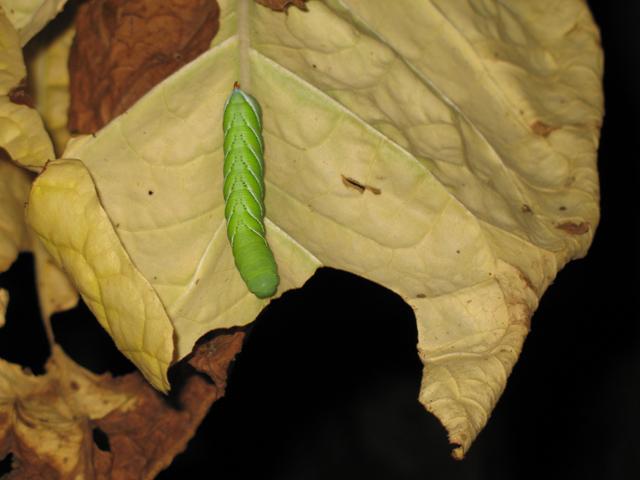

The juicy grass-green caterpillars can strip a plant overnight and then start demolishing the fruit. Nondescript brown moths lay pearl-like eggs on your tomato, pepper, or eggplant, from which the big green monsters will hatch and start to eat voraciously. Tomato Hornworms are really big green alien-like caterpillars that can munch through and devastate your vegetable garden. One of my most despised pests is the Tomato Hornworm. Hornworms with these cocoons should not be included in your counts because they are no longer feeding.Working outside I encounter a lot of unusual pests and annoyances. These are cocoons of a tiny wasp that develops inside the hornworm and kills it. Late in the growing season, many of the hornworms may have small, white, football-shaped objects on their backs. If 5 or more hornworms are found per 50 plants, then a spray should be applied prior to harvest.

Hornworms feed in the upper 1/3 of the plant and can be found hanging from the underside of the leaf. Use a minimum of 5 locations per field, more are better, especially for large fields. This should allow time for a “clean-up” spray and the harvest interval to pass before tobacco is cut and taken to the curing structure.Ī list of recommended insecticides can be found in ENT-15, Insecticide Recommendations for Tobacco Beds and Fields.Īn assessment of hornworms can be made by carefully examining groups of 20 plants at randomly selected locations over a field.

If this is not practical, then plants should be checked about a week before harvest. Ideally, tobacco should be checked weekly from topping until harvest to determine if hornworm numbers justify treatment. Hornworm infestations must be handled in the field before housing. There are no registered or effective treatments to control hornworms feeding on tobacco in the curing barn. Hornworms present when the tobacco was cut will be taken to the barn where they will continue to feed until they complete their development and drop to the barn floor. That leaves plenty of time for late-flying moths to lay eggs that lead to infestations. The residual protection from the application usually lasts for 5 to 7 days. The long flight period means that infestations can develop even if the crop was sprayed with an insecticide soon after topping. Tobacco hornworm moths fly during much of August and early September, attaching single eggs to the undersides of tobacco leaves in the upper 1/3 of the plant. University of Kentucky College of Agriculture ENTFACT-151: Keeping Hornworms from the Curing Barn | Download PDF by Lee Townsend, Extension EntomologistĪnd Bob Pearce, Extension Tobacco Production Specialist


 0 kommentar(er)
0 kommentar(er)
